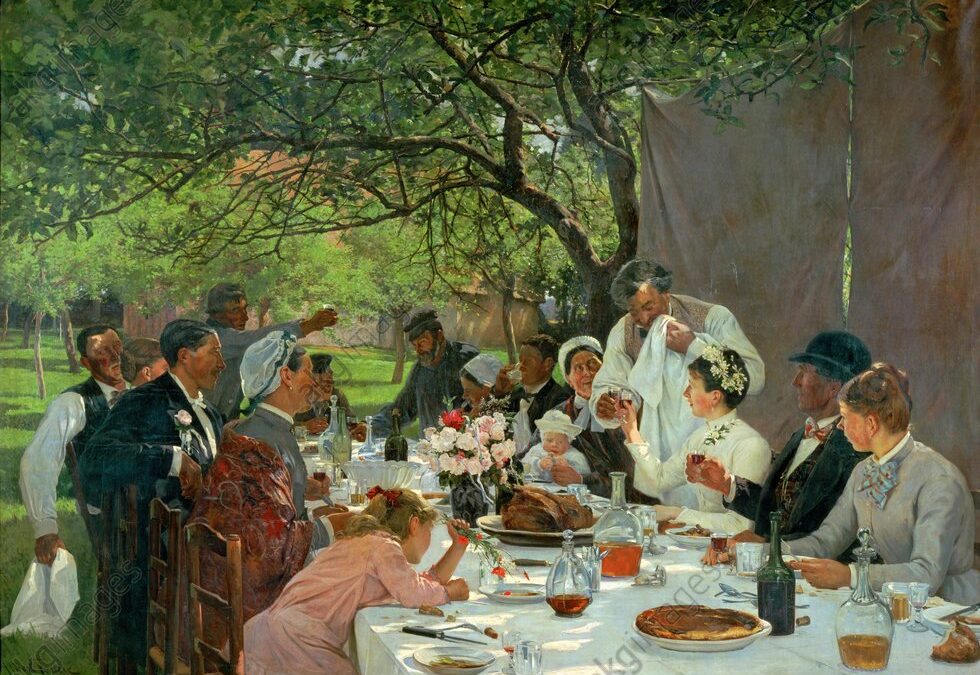Unlike Gustave Flaubert’s wedding party in Madame Bovary (a town about fifty miles east), where decorum is flouted, drunkenness prevails, Fourie’s agricultural bourgeoisie is well-mannered, and etiquette is etiquette observed. * This is an intentional contrast. Even the situation of the wedding feast in an apple (or pear) orchard is the opposite of Flaubert’s barnyard setting. [See Flaubert’s Madame Bovary posted elsewhere in PicnicWit.com]
Fourie’s table is trim, the food decorously placed on a startling white cloth alluding to modest prosperity. Guests are comfortably seated and attentive. It’s a happy moment as the smiling bride accepts a toast, while the groom, sitting across the table from her, looks on with affection. Flaubert’s Emma must endure crude guests excessively drinking and eating while talking business or playing silly tricks.
Though the table has not yet been cleared of the roast ham, wines, and cordials, the diners have gotten to the modest gateau, an ordinary cake that contrasts with Flaubert’s ornate multi-tiered wedding cake decorated with at cupid. Flaubert disdained the middle class and used the Bovary wedding to illustrate its vulgarity.
Yport is a beach town, and I do not know why Fourie selected the orchard for his setting.
Featured Image: A simple gateau for a country wedding. Albert Fourie. The Wedding Feast at Yport [Une Repas de Noces á Yport] (1886), oil on canvas. Musée des Beaux, Arts, Rouen. Rouen: Musée des Beaux-Arts
* When Fourie provided illustrations for Madame Bovary in the 1885 edition, he chose not to describe the wedding feast. His most important contribution to the text, and his painting, is his sentimental The Death of Madame Bovary [La Mort de Madame Bovary] (1883). Rouen: Musée des Beaux-Arts.

